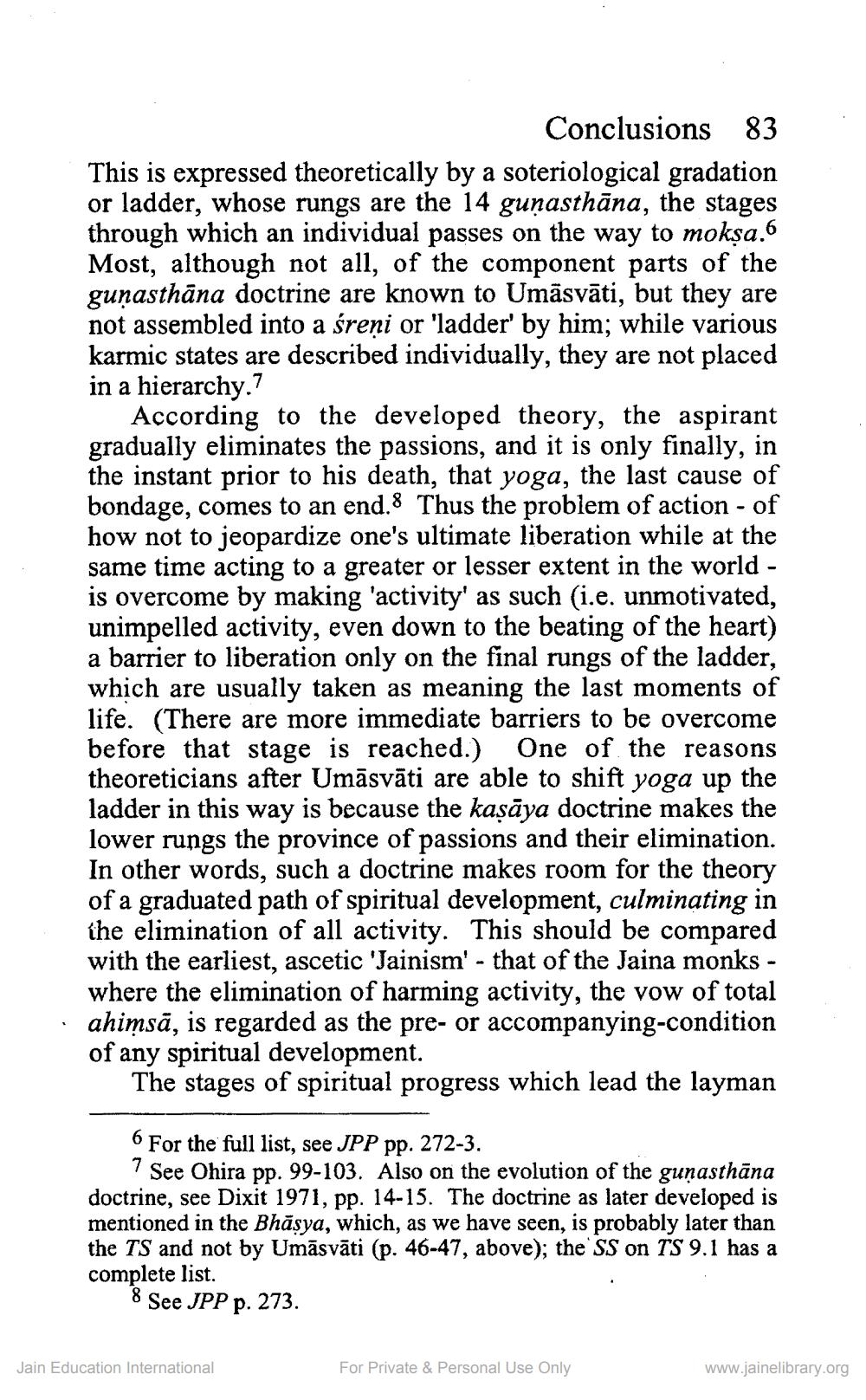________________
Conclusions 83 This is expressed theoretically by a soteriological gradation or ladder, whose rungs are the 14 gunasthāna, the stages through which an individual passes on the way to mokşa.6 Most, although not all, of the component parts of the gunasthāna doctrine are known to Umāsvāti, but they are not assembled into a śreņi or 'ladder' by him; while various karmic states are described individually, they are not placed in a hierarchy.7
According to the developed theory, the aspirant gradually eliminates the passions, and it is only finally, in the instant prior to his death, that yoga, the last cause of bondage, comes to an end. 8 Thus the problem of action - of how not to jeopardize one's ultimate liberation while at the same time acting to a greater or lesser extent in the world - is overcome by making 'activity' as such (i.e. unmotivated, unimpelled activity, even down to the beating of the heart) a barrier to liberation only on the final rungs of the ladder, which are usually taken as meaning the last moments of life. (There are more immediate barriers to be overcome before that stage is reached.) One of the reasons theoreticians after Umāsvāti are able to shift yoga up the ladder in this way is because the kaşāya doctrine makes the lower rungs the province of passions and their elimination. In other words, such a doctrine makes room for the theory of a graduated path of spiritual development, culminating in the elimination of all activity. This should be compared with the earliest, ascetic 'Jainism' - that of the Jaina monks - where the elimination of harming activity, the vow of total ahimsā, is regarded as the pre- or accompanying-condition of any spiritual development.
The stages of spiritual progress which lead the layman
6 For the full list, see JPP pp. 272-3.
7 See Ohira pp. 99-103. Also on the evolution of the guṇasthāna doctrine, see Dixit 1971, pp. 14-15. The doctrine as later developed is mentioned in the Bhāsya, which, as we have seen, is probably later than the TS and not by Umāsvāti (p. 46-47, above); the SS on TS 9.1 has a complete list.
8 See JPP p. 273.
Jain Education International
For Private & Personal Use Only
www.jainelibrary.org




